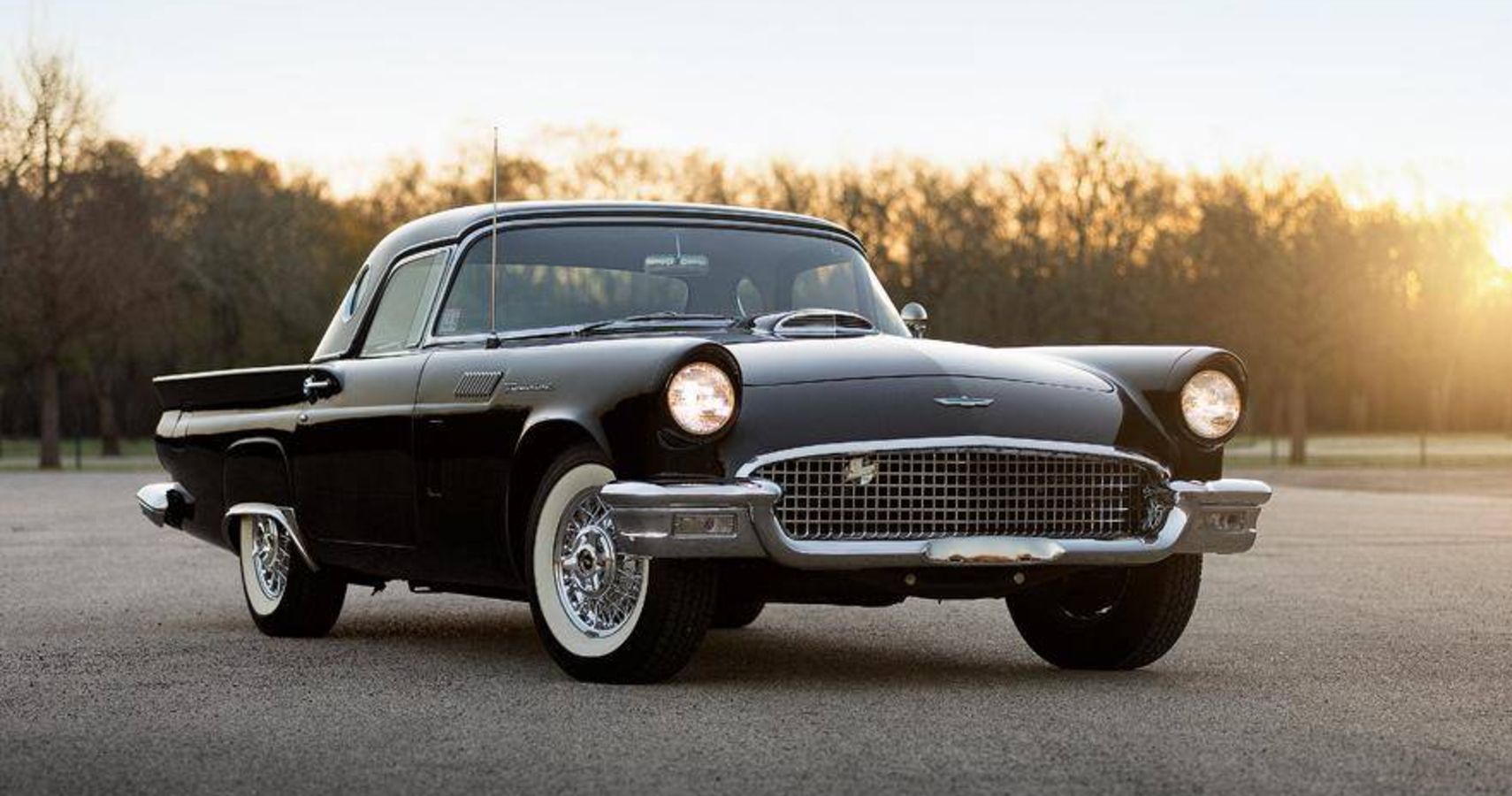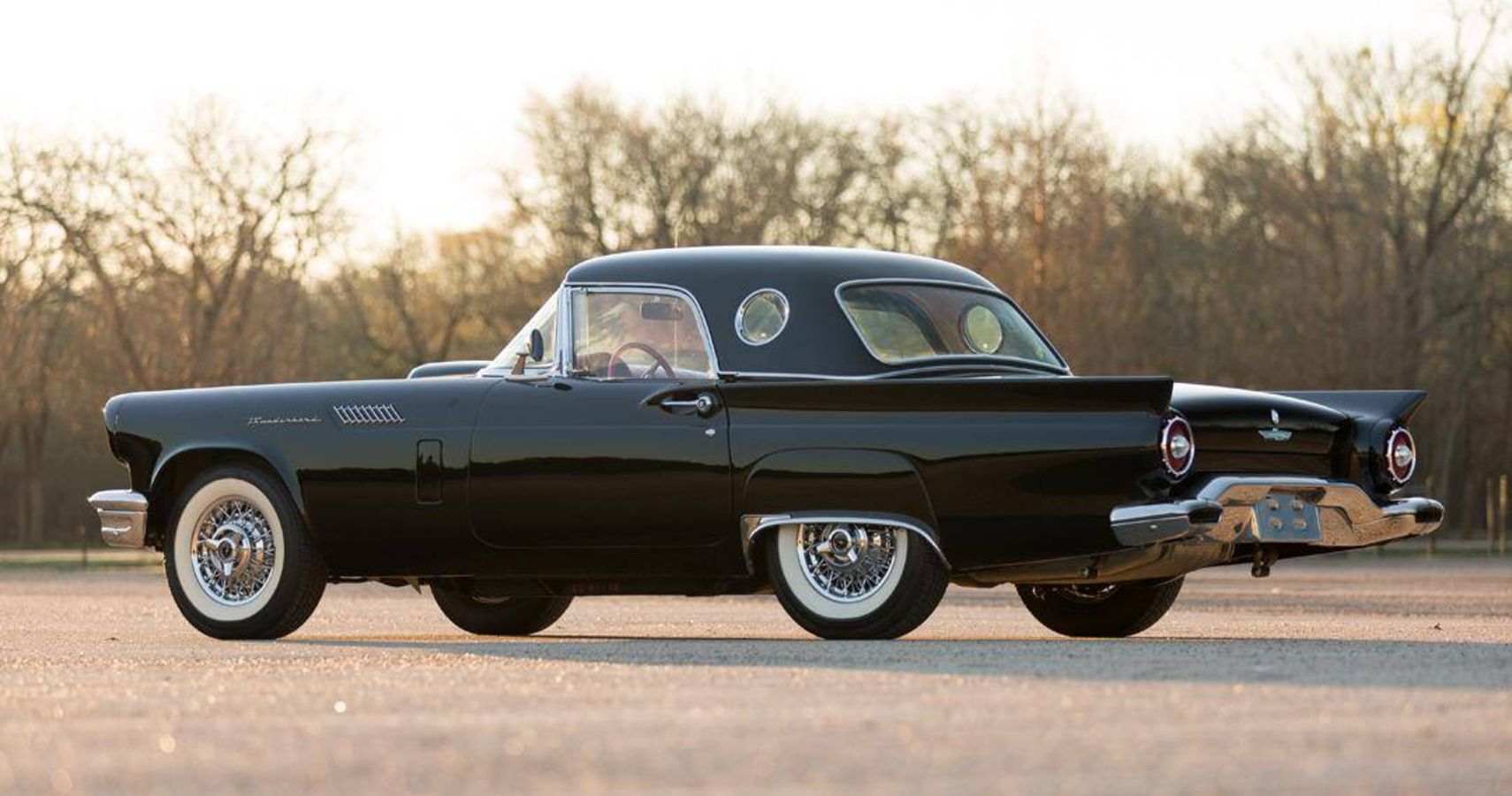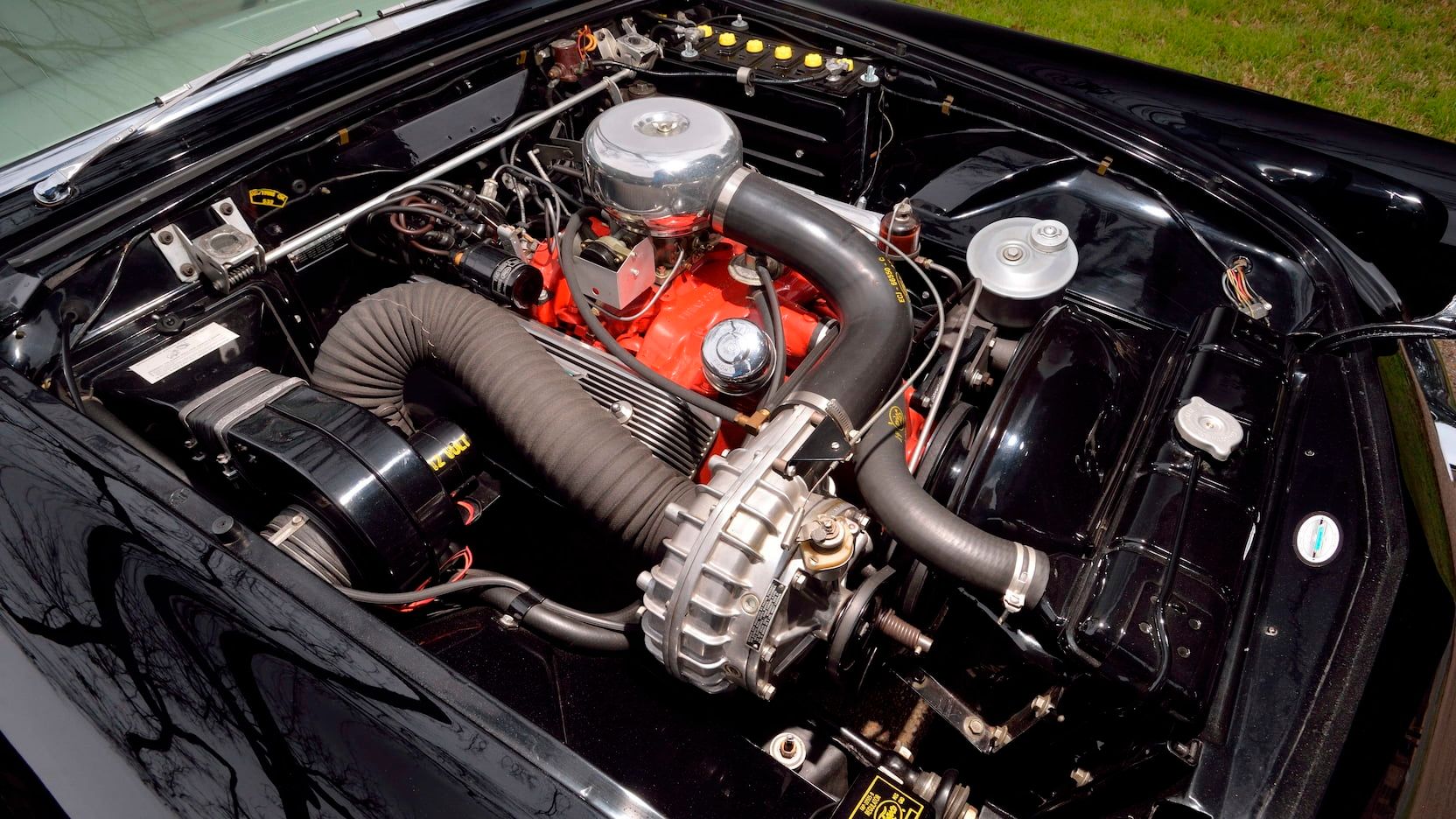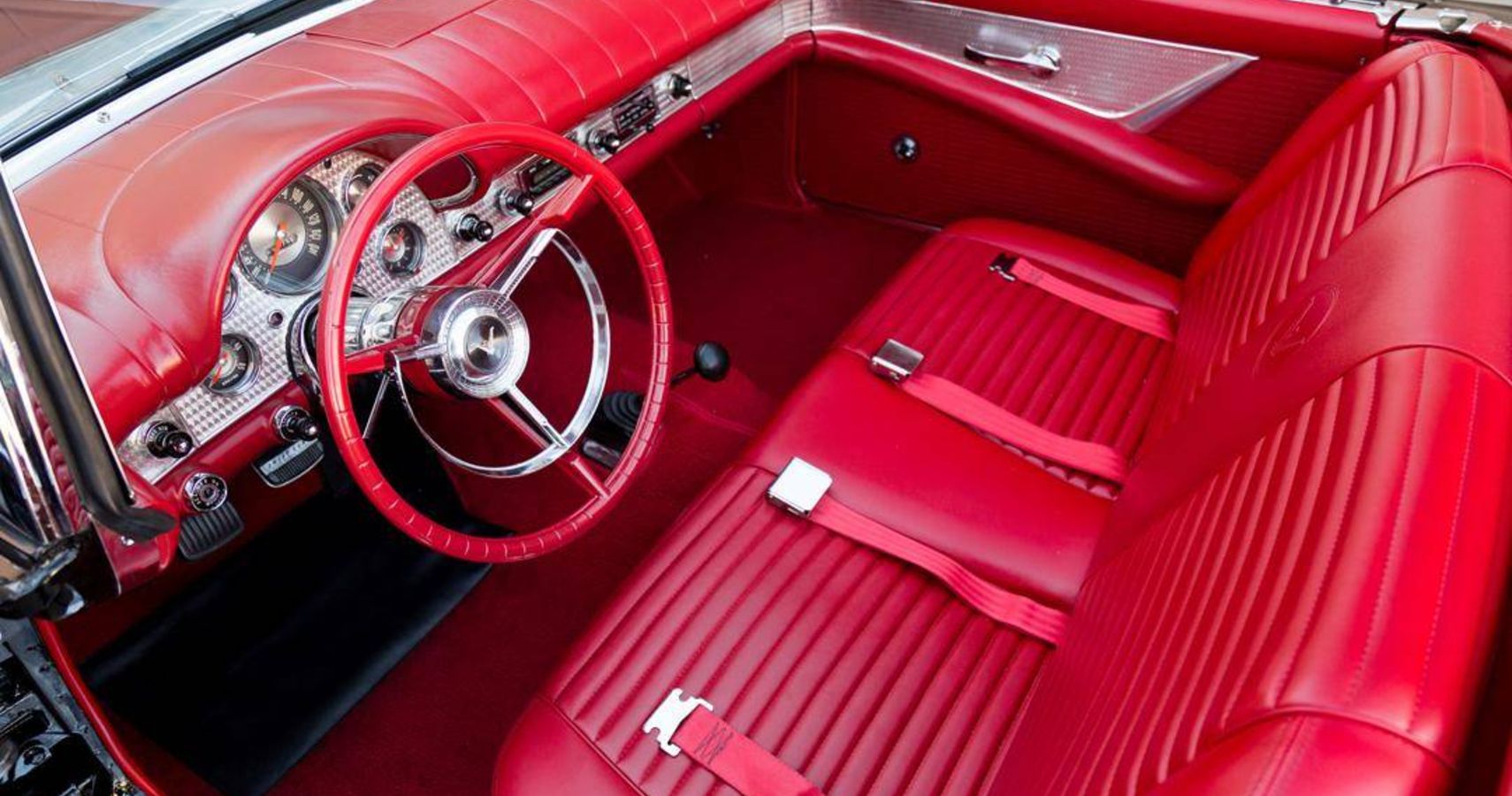For the 1957 model, the Ford Thunderbird might have looked more or less the same as the original versions from the previous two years. However, this would be the year when the car's true capabilities would be unleashed upon the American public. Even though sales of the original T-Birds were completely annihilating the competing Chevrolet Corvette during the previous two model years, Ford still dabbled with the notion of taking things a step ahead, totally eclipsing any form of domestic competition with the D/F-Code Thunderbirds.
Notably, only 15 units were ever built, all by hand and for NASCAR homologation. These cars were the earliest Thunderbirds to receive forced induction via the McCulloch VR57 Phase 1 superchargers, as well as some other significant tweaks that allowed these cars to break several records for production vehicles and pave the way for the F-Code series of Thunderbirds that same year. Now, their rarity is higher than ever, making this one of the most elusive classic cars on the market.
Why 1957 Was The Most Significant Year For The Ford Thunderbird
After the Thunderbird first spread its wings in 1955, it became an instant hit. The model itself was a direct response to the flurry of interest sparked when GM's Harley Earl had created the first Chevrolet Corvette in 1953. However, what most gearheads often forget is that the Corvette was built to compete directly with European sports cars, as there wasn't any true domestic competition (at least on a level that exhibited mass production).
Still, the original Corvettes were essentially just basic Chevrolet sedans with lightweight, fiberglass bodywork that transformed the package into a roadster. Performance was sluggish, criticism was rampant, their price tags were high, and the cars didn't sell well at all during their first few years on the market.
Ford, however, decided to take an alternative route with the Thunderbird. Instead of advertising it as a sports car, FoMoCo's marketing team had decided to describe the new model as a "personal luxury car", which lightened the blows from critics. Additionally, the Thunderbird wasn't necessarily built to compete with the high-end European exotics, but instead, was built primarily to compete against the Corvette. This allowed Ford to narrow down their market, as well as expand the notion of a roadster to a broader range of prospective buyers.
The 1955 and 1956 models were nearly identical in terms of appearance, save for the porthole windows featured on the latter. This lack of change was something of a rarity for an American car during the 1950s, as designs back then tended to change drastically on an annual basis. 1957 saw the addition of longer tailfins, but everything ahead of which was more or less the same on the outside. Still, the pivotal factor of the 1957 Thunderbird was the addition of serious power upgrades for these cars, allowing for a level of performance that was previously unseen for mass-produced American cars. Combined with the slick styling and two-seater platform, this would be the last year that the Thunderbird stayed true to its form before becoming a bloated mess for 1958 and onward. Although the later cars certainly didn't look bad, they lacked the inherent capabilities of these original Thunderbirds, which are the main reasons why the nameplate became so popular in the first place.
An Overview Of The Special Supercharged D/F-Code Thunderbirds
In 1957, the Chevrolet Corvette did much better in sales than during its initial run. One of the key reasons for this was the addition of Chevrolet's original small-block V8 engine, which received an upgrade to 283ci for that model year. However, what had caught the attention of Ford's general manager, Robert McNamara, was the utilization of fuel injection for this platform. While the Thunderbird had been running a V8 since its inception in 1955, McNamara had sought to take things a step further and keep their advantage over the competition at General Motors. McNamara had felt so strongly about this that he stated that the program was “deemed essential to the maintenance of the Ford car and Thunderbird performance reputation".
The answer came in the form of the McCulloch Paxton VR57 centrifugal supercharger, which provided forced induction to the car's 312ci V8. Prior to reaching the market, Ford's skunkworks had developed 15 supercharged prototypes known as the D/F-Code cars. Other unique touches included a heavily modified 3-speed manual transmission from Borg-Warner, which was developed strictly for racing. Fiberglass hardtops and seatbelts were also fitted on all D/F-Code variants. The claimed output was 300bhp from Ford, however, McCulloch claimed an output in the range of 360bhp for these prototypes. The essential idea was to create homologation versions of this setup for NASCAR, which had dictated that 100 units had to be manufactured to become eligible for competition. Even so, the series had also ruled that they need not use the same model, and Ford consequently built 65 Two-Door Sedans, 20 convertibles, and 15 Thunderbirds with the D/F-Code package. Aside from the NASCAR interests, Ford was keen to beat a speed record set by the Chevrolet Corvette in 1956, which had made it the fastest car produced within the United States. To do the job, A D/F-Code Thunderbird was sent to 1957 Daytona Speed Trials, where it broke the record with a speed of 138.755mph, solidifying the Thunderbird's presence as the fastest road car that the United States had to offer.
The 1957 Ford Thunderbird Special Supercharged 312: The Impact On Modern Society
Out of the 15 D/F-Code Thunderbirds, only 8 are confirmed to exist today. These prototypes had set the motion for the following F-Code cars for that same model year. The F-Code Thunderbirds still turned out 300bhp, but were limited to roughly 200 units, making them exceptionally rare and establishing Ford further into the realm of performance cars. Even so, that realm wouldn't see the Thunderbird achieve its former glory ever again.
As a result of Ford's efforts, Thunderbird sales for 1957 equated to 21,380 units in total, outdoing the Corvette's sales of 6,339 cars. This popularity had caused Ford to further explore the possibilities of the Thunderbird by heavily inflating the car for the 1958 model year, adding a backseat and several other features that turned the package into a strict cruiser, without the high-performance potential seen in 1957.
Regardless, sales increased to 37,892 units, and Ford kept the rhythm going. The T-Bird would continue to be a larger model, even featuring four-doors during some versions in the late 1960s. When weight increases, performance always suffers. As a result, the Thunderbird had gradually morphed into more of a luxury car than the sporty roadster that the name had originally represented. It wasn't until the early 2000s that Ford finally attempted to correct this error, although it didn't exactly work out too well.
Sources: Ford, RM Sotheby's, Muscle Car Facts




